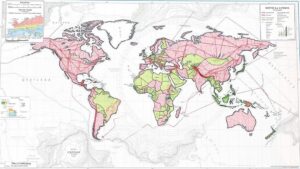Combining LiDAR with Historical Maps to Locate Treasure Sites
Combining LiDAR with Historical Maps to Locate Treasure Sites
The integration of Light Detection and Ranging (LiDAR) technology with historical cartographic resources represents an innovative approach to archaeological exploration, particularly in locating treasure sites. This article examines the methodology and implications of such a combined approach, highlighting the benefits, challenges, and specific case studies that demonstrate the effectiveness of this technique.
Understanding LiDAR Technology
LiDAR is a remote sensing technology that utilizes laser light to measure distances to the Earths surface, creating precise, three-dimensional information about the shape and surface characteristics of the terrain. This technology has gained traction in archaeology due to its ability to penetrate forest canopies and reveal ground features that are not visible through conventional observation methods.
Historical Maps: A Resource for Exploration
Historical maps serve as invaluable resources for archaeologists, providing context and information about past land use, settlements, and possible locations of buried treasures. For example, 18th-century maps of the Caribbean, created during the height of piracy, can highlight areas known for hidden treasures, known pirate coves, and maritime navigation routes utilized at that time.
The Integration of LiDAR and Historical Context
Combining LiDAR data with historical maps enhances the investigative potential of treasure hunting by providing a clearer picture of the landscape at different time periods. The integration of these two data sources can reveal previously undocumented features of landscapes that were significant during the historical periods being studied.
Methodology for Combining LiDAR and Historical Maps
- Data Acquisition: Acquire high-resolution LiDAR data, which provides elevation changes and surface features. Historical maps need to be digitized for further analysis.
- Georeferencing: Both LiDAR and historical maps must be accurately georeferenced to allow for proper overlay and analysis.
- Data Analysis: Use Geographic Information Systems (GIS) software to analyze the integrated layers. This software allows for the comparison of current topographies and historical features.
- Field Verification: The final step involves field verification where ground truthing is conducted to evaluate the potential locations identified through the combined analysis.
Case Studies of Successful Integration
Several notable case studies illustrate the successful application of LiDAR and historical maps in locating treasure sites:
- Yucatán Peninsula, Mexico (2016): Archaeologists utilized LiDAR to reveal an extensive network of ancient Mayan cities, uncovering temples and ceremonial sites that provided context for potential treasures buried within or around these structures.
- Florida, United States (2020): A blend of LiDAR data with 17th-century Spanish exploration maps helped researchers uncover remnants of shipwrecks and treasure sites along the Florida coastline.
Challenges and Considerations
While the combination of LiDAR and historical maps holds great promise, it is not without its challenges. Key considerations include:
- The accuracy of historical maps can vary significantly; maps were often drawn with limited understanding of geography and can contain errors that may mislead modern researchers.
- LiDAR data acquisition can be expensive and require specific conditions for optimal results, including favorable weather and visibility.
- Field verification of findings can be labor-intensive and may not always yield the expected results, necessitating ongoing adjustments in strategy.
Conclusion and Actionable Takeaways
The combination of LiDAR technology and historical maps offers a revolutionary framework for treasure hunting and archaeological discovery. This method not only maximizes the potential for locating buried treasures but also contributes to our understanding of past civilizations and their interactions with the landscape.
For archaeologists and enthusiasts looking to explore this methodology, the following actionable takeaways are important:
- Invest in training and resources for utilizing LiDAR technology and GIS software effectively.
- Conduct thorough research into historical maps relevant to the targeted area of exploration.
- Establish field verification protocols to confirm findings and glean insights from the physical terrain.
To wrap up, employing a multidisciplinary approach that combines modern technology with historical knowledge not only improves the search for treasures but also preserves cultural heritage for future generations.
